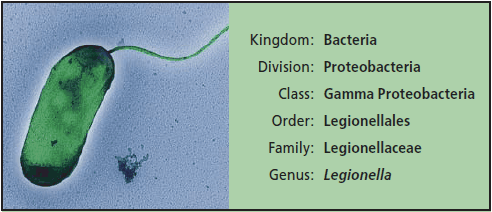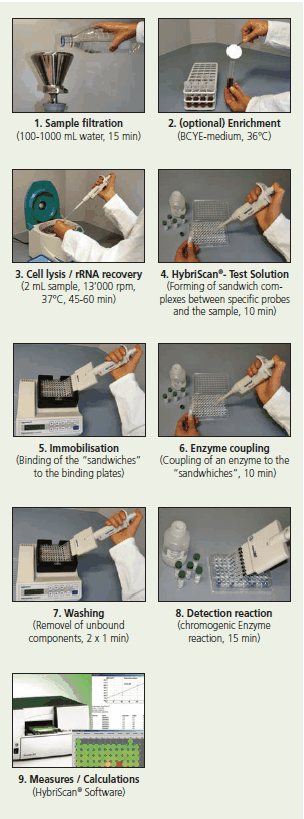HybriScan™ Test Kits for Legionella Detection | Sigma-Aldrich
Jvo Siegrist
Microbiology Focus Edition 1.1
Legionella contamination in air conditioners and water supply systems poses a serious health concern. Sigma-Aldrich® offers traditional media and innovative, award-winning kits for the specific, rapid, and reliable detection of this pathogen.
Legionella is a Gram-negative, rod-shaped bacterium commonly found in aquatic environments. Some species have been isolated from soil. The organism can survive a wide range of conditions, including temperatures from 0 to 63 °C, and pH values from 5.0 to 8.5. Because Legionella has cysteine as a growth requirement, it does not grow on common blood agar media.
Legionella species cause Pontiac fever (named from a 1968 outbreak in Pontiac, Michigan) and Legionnaires disease (named from a 1976 outbreak in Philadelphia, Pennsylvania at an American Legion convention). In 1977 the new pathogen was identified and named Legionella ( Figure 1). The disease is contracted by inhaling water vapour contaminated by the Legionella bacteria. Symptoms are flu-like, with chills, muscle aches, and fever. Death can result from severe pneumonia. The Philadelphia outbreak sickened hundreds and resulted in 34 deaths.

Figure 1.A single strain LPO2 Legionella pneumophila bacterium isolated from the 1976 Philadelphia outbreak. The bacterium is just under 1 μm in width.
Source:
Maria Ericsson, Russel Vance (Harvard Medical School Electron Microscopy Facility); modified by Sigma-Aldrich: R. Freuler.
The traditional method to detect Legionella is based on buffered charcoal yeast extract (BCYE) agar. For growth, the organism requires the presence of cysteine and therefore does not grow on common blood agar media. Common laboratory procedures recommend concentrating the sample by centrifugation and/or filtration through 0.2 μm filters before inoculation. For selective isolation, antibiotics like polymyxin B, anisomycin, vancomycin, bromothymol blue and bromocresol purple are added. Additionally, selectivity can be attained by applying heat or acid.
Kits for Legionella Detection
Sigma-Aldrich has developed a kit based on the detection of Legionella rRNA. The test is performed on a microtitre plate and takes less than 2.5 hours. Cell count quantification is possible with this kit using photometric methods. Compared to PCR, our system does not count dead cells, is much easier to use (Figure 2), is less expensive, and is not affected by the sample matrix. Confirming its utility, our test system won several innovation awards, and will surely become a routine method to detect Legionella. The rapidity, sensitivity, reliability, robustness, adaptability to sample matrix, and time-savings meet today’s analytical microbiology demands. For more details of our new Legionella detection kit, please visit www.sigmaaldrich.com/hybriscan.

Figure 2.Workflow for the HybriScan™ kits
For more details of our new Legionella detection kit, please visit www.sigmaaldrich.com/hybriscan.
Trademark attributes:
- Sigma-Aldrich is a registered trademark of Sigma-Aldrich Co. LLC
- HybriScan is a trademark of ScanBec GmbH
如要继续阅读,请登录或创建帐户。
暂无帐户?